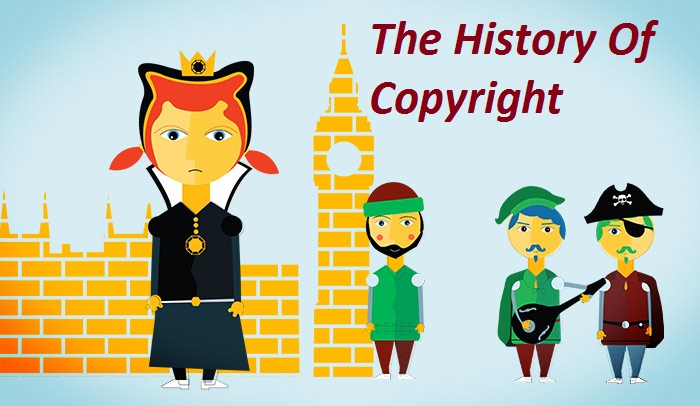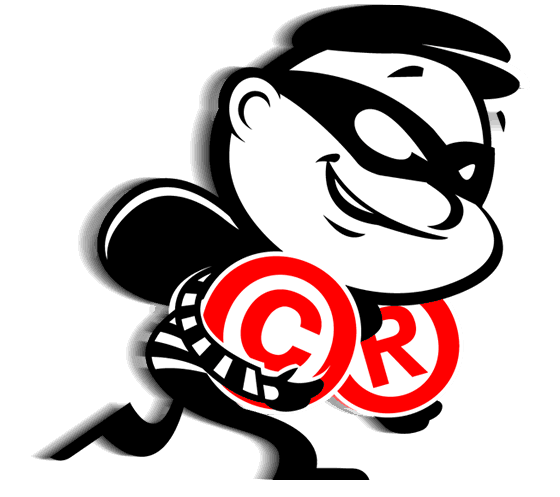19.07.16
The History of Copyright and it’s Principles
Origin of сopyright
 In Greece, Roman Empire or in Middle ages of Europe, there was no problem with something that today is called intellectual property. Paintings were drawn for months and usually on the walls in the mural or mosaic forms. Books were copied by entire monasteries, and the bookmarket was so small and so out-of-bounds, that even the authors couldn’t measure the edition of their works. However, the writers of the time died in agony without an heir behind. So no one cared about the problem.
In Greece, Roman Empire or in Middle ages of Europe, there was no problem with something that today is called intellectual property. Paintings were drawn for months and usually on the walls in the mural or mosaic forms. Books were copied by entire monasteries, and the bookmarket was so small and so out-of-bounds, that even the authors couldn’t measure the edition of their works. However, the writers of the time died in agony without an heir behind. So no one cared about the problem.
The situation gained a plot twist with inventing of the printing press and uprising of the literature. The evolution of the typography gave birth to piracy. Initially, the struggle against the phenomenon was conducted by the usual methods of medieval censorship. However, publishers and authors gradually eased censorship and created an entirely new concept of copyright licensing.
So what was a novelty of this concept? The fact is, that the Roman and medieval laws worked only with material objects. For example, if the debtor does not return a slave ("speaking instrument"), it was necessary to file a lawsuit to the magistrate - Pretoria. If someone prevents to use an object (for example, blocks the gates with a wagon), there is another lawsuit. And so on.
But what should we do if it is an immaterial object that was stolen, like an abstract text of the book? After all, the writer doesn’t lose his property, as nobody creates any obstacles. This is where the concept of "copyright" appears and belongs to the author of the creation. An object of copyright is called "intellectual property" and is opposed to traditional things, such as money, property, animals, slaves, and so on.
Concept of copyright
According to the concept, the author has whole "bunch" of rights to his work. Firstly, the right to commercial use (sale, paid performance; in a word, any profit). Even non-commercial use in the most cases should be agreed with the author. For example, it is forbidden to play music in public without paying royalties to it’s author. That’s why there is the warning "Only for home listening / viewing" on the CDs.
Secondly, the author has his own "personal", inalienable rights to his work, which ones belong only to him. Even if the author transfers his work to publishers, studios or anybody else for sale he retains the rights to it anyway. What kind of rights do we refer to? First of all it is the authorship (do not muddle up with copyright) - the product can not be assigned to anyone but the author. Also, it is about protecting the product. For example, the publisher can’t change the heroes’ names of the novel without author’s approval.
Copyright was first accepted in the Berne Convention in 1886. Afterwards terms were repeatedly postponed, new documents were considered, but the principles remained the same. So the intellectual property law and in particular copyright are more or less equal all over the world.
Let’s return to the concept of copyright. On the one hand, such an approach – copyright is exclusively author’s feature and only he has the right to use it – is the simpliest possible. Authors have gained the legal right to their works and this right applies not only to material objects, but also to a word, an image and a music. Afterwards, this list was extended with fonts, cutout garments, 3D-models, etc., but the principles remained the same: the author has the right to make a profit and only he can rule the roost with this right.
On the other hand, this approach causes problems with proving authorship. After all, copyrights, according to the concept, appear at the time when the work is done. They are not registered or simply fixed by the author anywhere. So, in practice, the author could be anyone who have gained the original work: in case of a dispute the copyright will be given to him. That’s why the authors have to be cunning to prove their superiority.
Proving superiority
Of course, the easiest way to confirm the authorship is to publish the author's work under his jr her own name. An article in a magazine or a blog entry have
independent fixed date of publication. But what if the author does not want to publish his or her work? For this case, there is a whole set of tricks to bind the product to a certain date.
First of all, particular importance has package date. Imagine you have sent a book by registered mail to your mail address. If you don’t open the envelope, the date on the postmark will confirm that the package has been delivered to the author (addressee) at a certain time.
Another option is to date the document at the notary. He can offer no proof of the authorship and does not guarantee the date itself. The main function of the notary – is to authenticate documents, signatures, etc. However, when a notary certifies a signature he sets the date. So, you can ask him to assure the signature on the photos and a notary will stamp the document and set the date of authentication.
A stronger option – is the deposit, i.e. product safekeeping. This service is available at the notary, but is more expensive, than at a number of non-governmental organizations associated with intellectual property. In this case, you will be able to present to the court a document stating, that the product was stored on a certain date. Of course, this is not a government level paper, but the courts often rely on such documents.
Content of the product
 As long as copyrights are determined at the moment the work is done, no one even checks out if it makes any sense. Even randomized set of characters (as it is in the last chapters of the "Standards") is protected by copyright. The same applies, for example, to abstract paintings and to children's drawings. Copyrights to drawings or photographs taken by animals could be doubted: there is known case with monkey’s selfie, which is equally owned by the zoo administration and by the camera owner.
As long as copyrights are determined at the moment the work is done, no one even checks out if it makes any sense. Even randomized set of characters (as it is in the last chapters of the "Standards") is protected by copyright. The same applies, for example, to abstract paintings and to children's drawings. Copyrights to drawings or photographs taken by animals could be doubted: there is known case with monkey’s selfie, which is equally owned by the zoo administration and by the camera owner.
With such a literal interpretation of the product, disputes will inevitably emerge. For example, how intense do you need to deform the work, so it becomes a totally new product? This can be equally apply to сollage, parody and postmodern allusions. There is no fixed percentage of plagiarism, that defines a completely original work.
Copyrights protection
The concept of copyright almost excludes government influence. There is nothing to register, nothing to meet the requirements, there is only need in proving superiority. However, there is no need in copyright, while nobody offends it. It is necessary in case of litigation on the income and loss of profits.
Copyright protection – is a long and laborious process. Major labels, film companies and other such giants carry the wiggery on their own backs. And what about the performers, who want to become paid independent? They should appeal to organizations engaged in copyright protection. These structures sue pirates and make them pay fines, while the musicians gain a certain percentage of this income.
To sum up, copyright – is the most obvious way to register the intellectual property without any government influence. However, it is inconvenient and it can not be applied in practice to IP based not on the shape, as on the content.
Read also: "Famous Plagiarists"


